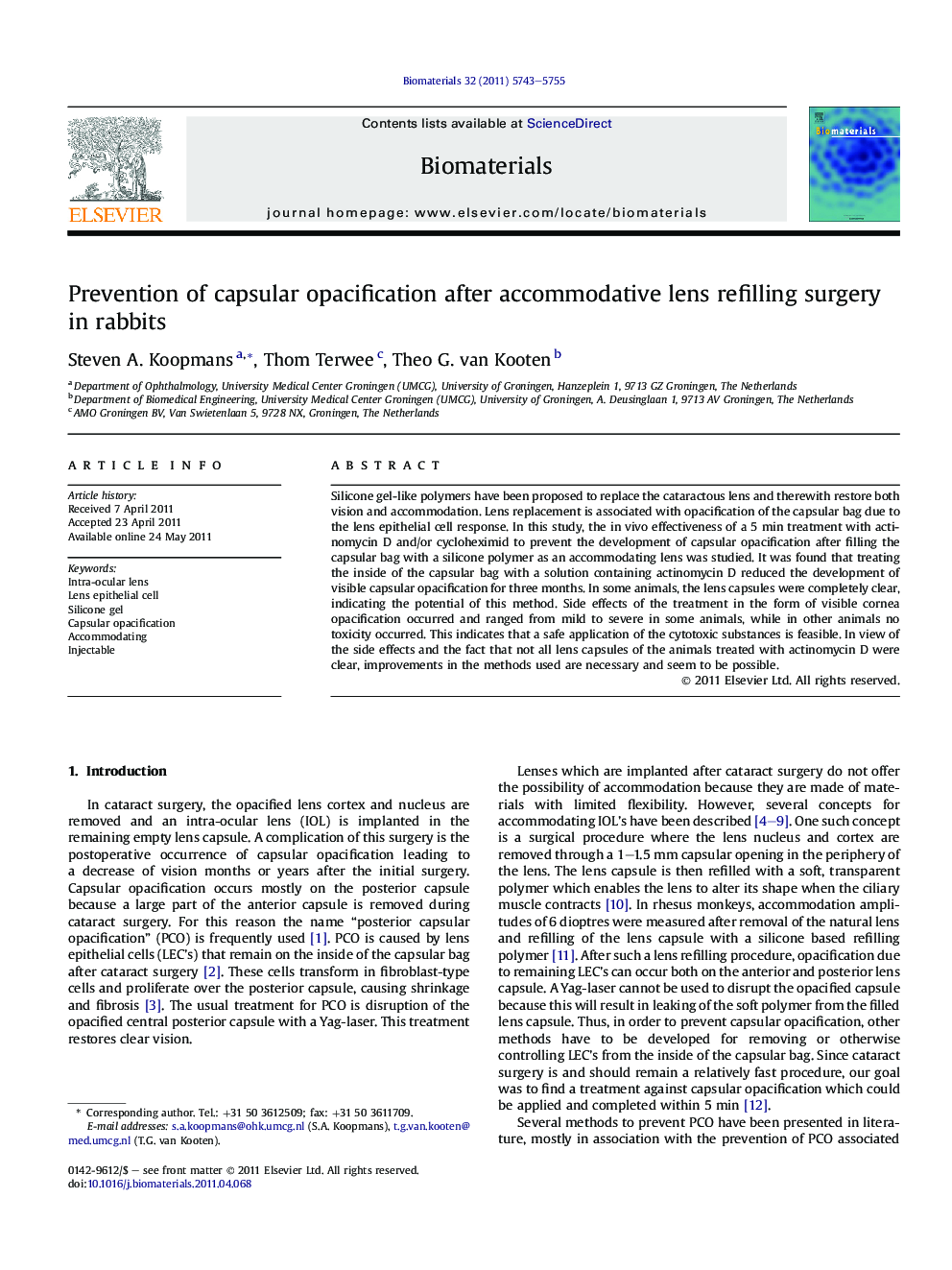| Article ID | Journal | Published Year | Pages | File Type |
|---|---|---|---|---|
| 7908 | Biomaterials | 2011 | 13 Pages |
Silicone gel-like polymers have been proposed to replace the cataractous lens and therewith restore both vision and accommodation. Lens replacement is associated with opacification of the capsular bag due to the lens epithelial cell response. In this study, the in vivo effectiveness of a 5 min treatment with actinomycin D and/or cycloheximid to prevent the development of capsular opacification after filling the capsular bag with a silicone polymer as an accommodating lens was studied. It was found that treating the inside of the capsular bag with a solution containing actinomycin D reduced the development of visible capsular opacification for three months. In some animals, the lens capsules were completely clear, indicating the potential of this method. Side effects of the treatment in the form of visible cornea opacification occurred and ranged from mild to severe in some animals, while in other animals no toxicity occurred. This indicates that a safe application of the cytotoxic substances is feasible. In view of the side effects and the fact that not all lens capsules of the animals treated with actinomycin D were clear, improvements in the methods used are necessary and seem to be possible.
